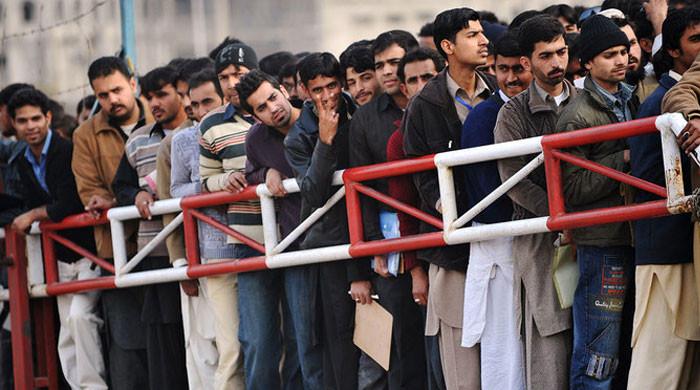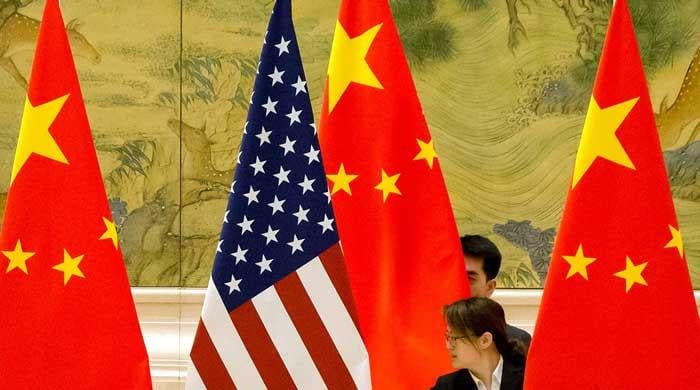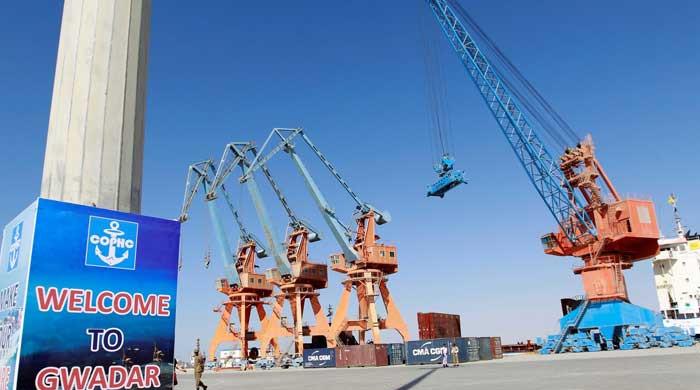The future is digital, but is Pakistan ready?
Progress in developing e-commerce will remain lackluster for Pakistan until investments are made in research and innovation
August 16, 2021

The global pandemic outbreak, followed by restricted movement of people and goods, compelled companies to instantly delve into innovative digital solutions by adopting tech-driven business and social practices.
As a result, the world after 2020 has become more digitally enabled. In a tele-everything world, people have shifted towards the digital more than ever, from e-commerce, to teleconferencing and remote working, to paperless records and agreements, to digital transactions and payments. Together, this has accelerated the ongoing process of global digital transformation, particularly in the realm of business and trade across industries.
As a post-pandemic new normal, Covid-induced digitalized events are expected to continue. However, in-person communication and physical activities may resume only to the extent where the businesses can accrue most benefits such as sharing tacit knowledge or to capture social value.
A latest report by UNCTAD on Covid-19 and e-commerce finds that, while global trade in goods and services declined amidst pandemic, the share of the e-commerce industry in global retail increased up to 17 percent in 2020. This trend is most likely to continue throughout the recovery times from the disease. The report also suggests that digitalization of buyers and sellers helped reduce the negative impacts of lockdown on the economy.
While the e-commerce sector and digital trade has been dominated by developed countries, Covid-19 has also steered up the process in developing countries since last year, particularly in Asia. For instance, China’s online retail share increased from 19 percent to almost 25 percent. Similarly, Thailand witnessed an almost 60 percent increase in downloading of online shopping apps in just one week during March 2020.
Like many developing countries, Pakistan has never remained good in keeping pace with the speed and scale of advancement in digital technology. Fortuitously, as businesses around the world are going through an inflection point, there is a lot of potential for the digital economy even for a technologically lagging country like Pakistan. The digital market is experiencing an unprecedented increase in terms of e-commerce, e-contracts, e-payments and electronic businesses in a trade processing chain altogether.
A record 35 percent increase in the market size of the e-commerce industry has been observed to be Rs96 billion in the first quarter of 2021 as compared to Rs71 billion in the previous year. Furthermore, the number of online retailers with prepayment have increased one-fourth during the last year. It has been well-reported that digital firms are the ones that got the most out of the post-Covid scenario, with more than 100 percent growth year-on-year in the past 12 months. As these companies continue to harness the digital economy, this helps most of them expand from local to foreign sources of revenue.
One of the main factors that may trigger advancement in digital technology and compliance with it is the spillover effect of the rapid growth in ICT. As the sector outperformed all other export service sectors in FY2021 with 47 percent remarkable growth, the demand of ICT-related sectors including e-commerce increased manifold.
What would have seemed impossible even a decade ago, with erratic progress and sluggish growth towards the digital market for Pakistan, Covid-19 has brought an overnight shift towards online shopping and retailing as well as online payments.
Being a country of robust youth population, the ICT industry has huge potential to grow. The online customer base has been expanding from young individuals to the sceptical generation. Today, where households are looking for online solutions to purchase basic necessary items, almost all brick-and-mortar retailers are going digital. On the other hand, young entrepreneurs are making efforts to capitalize the opportunities of the digitized economy coming-up with innovative e-commerce startups from various fields.
‘Modern problems have modern solutions’ turns out to be true as swift digitalization brought with it a number of challenges and limitations. While the digital infrastructure is at its infancy stage, it has already created a digital divide in society. In the Inclusive Internet Index 2020, Pakistan ranked at 76th out of 100 countries with only 35 percent of population having access to the internet. This has magnified the gap between the privileged and the unprivileged, skilled and unskilled, urban and rural. The tech savvy will be ahead of those with limited or no access to digital tools.
Besides, public perception and emotions can easily be manipulated through online misinformation causing significant social instability, disintegration as well as irrational deliberation and groundless policymaking. What is even more alarming are privacy and security related issues of free flow of data in the country.
Given the historic surge in digital businesses and marketing during Covid times, a defined e-commerce regulatory structure and data protection policy is needed to strengthen the digital economy.
Efforts have been made by the government to initiate a local e-commerce system as well as provision of internet access to every citizen. Setting up a Universal Service Fund (USF) to extend optic fiber connectivity is one among many initiatives the government has been taking. However, progress will remain lackluster for Pakistan which is already way behind in technological advancement until investments are made in research and innovation.
Even though the government’s policies seem quite promising, with new resolutions to set up improved digital infrastructure, digital skills and widespread connectivity under the Digital Pakistan Vision, its realization of the existing national digital policy is an issue that might not yield valuable tangible outcomes yet.
The writer is pursuing an MPhil in development studies at the Lahore School of Economics. She can be reached on [email protected]
This article originally appeared in the August 16, 2021 edition of daily The News. It can be accessed here.









